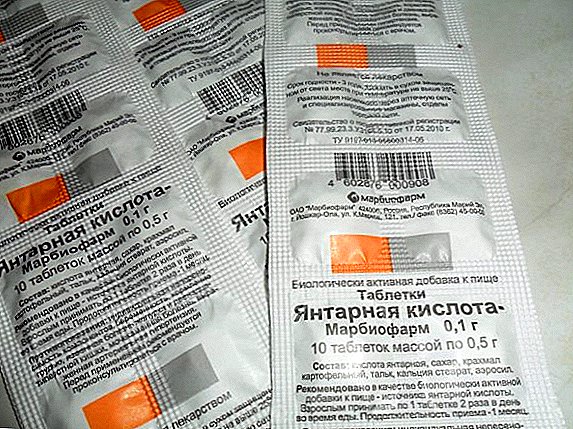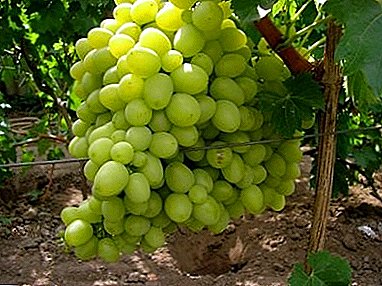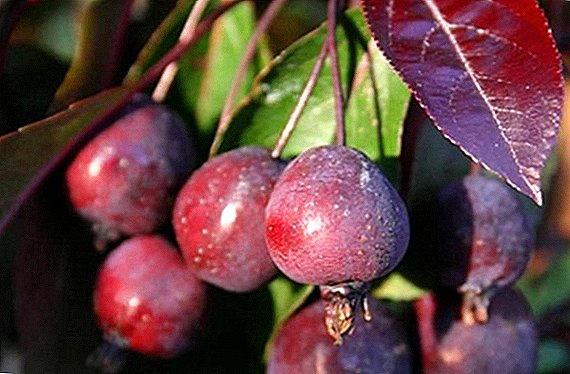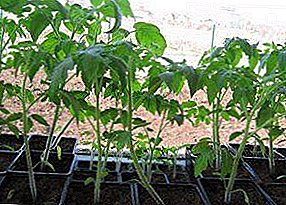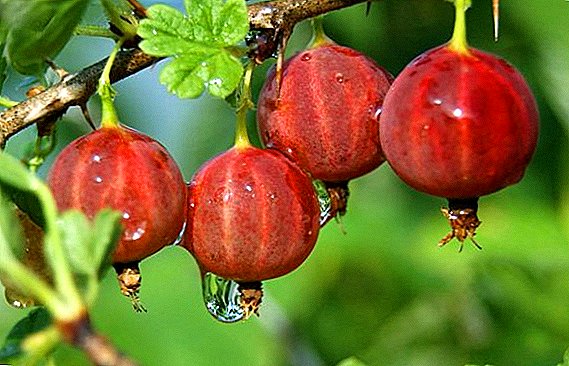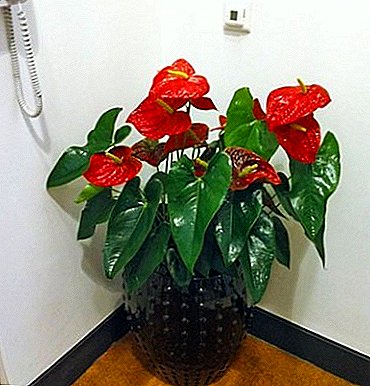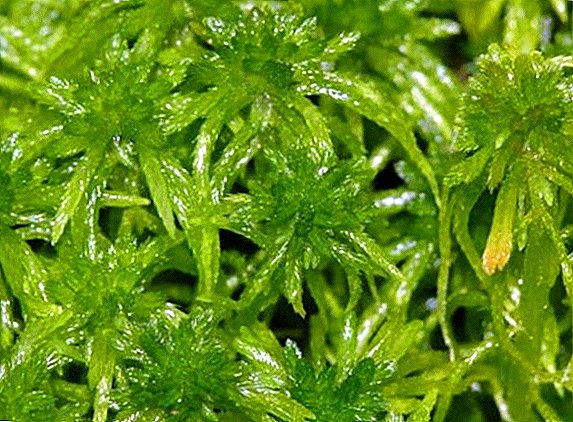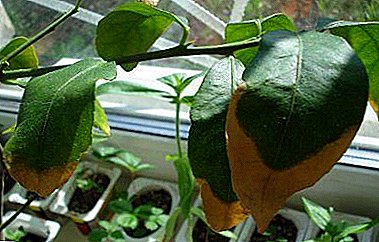
Indoor lemon is a culture from a subtropical climate. Growing it at home, it is not always possible to create suitable conditions for its proper and healthy growth. And instead, the plant begins to lose leaves, dry and turn yellow.
In this article we tried to find out why he throws off the leaves, what to do and how to save him from falling leaves. How to act if the homemade lemon has already fallen leaves.
Diseases are divided into three types:
- Caused by various viruses.
- Fungal.
- Due to adverse conditions.
Depending on the type of the disease, the methods of eliminating the disease of the lemon also differ.
Why sheds leaves? What to do?
Let's try to understand why the lemon tree drops leaves and what to do in this case.
Lemons come from places where, even in winter, they have the opportunity to receive a sufficient amount of sunlight. On lack of lighting Indoor lemon responds by dropping green leaves. The plant is depleted and unable to provide nutrition to all the foliage, and gets rid of excess.
IMPORTANT! What if he dropped all the leaves and dries? Put the pot to the solar window on the south side and be sure to provide additional illumination in the winter.
The rules for the care of indoor lemon in the winter, we described in a separate article.
Blackening of the tips of the leaves
Lemon likes high humidity. In winter, if the pot is next to a hot battery, the air is very dry. Lemon leaves inevitably turn black and dry.
To avoid this, it will be enough spray the plant regularly, thereby bringing it closer to optimum humidity.

Spots on the leaves
Yellow spots on the leaves. Yellowing the leaves of a newly acquired lemon is a normal phenomenon. The plant is trying to adapt to new conditions of stay. Why do the leaves turn yellow while being at home enough time and what to do at the same time find out further. Most likely, leaves are sunburned or excessive fertilization.
With all the love of sunlight, he should not receive them in the clear. The pot should be kept on the south side, so that the lighting was in the normal amount, but the plant should be lightly pritenyat in the summer heat. If the reason is excessive dressing, then you should rinse the soil in the pot.
Brown spots on leaves. Lemon leaves begin to darken, grow brown and turn rusty. with a lack of phosphorus. It starts from the tips of the leaves and then spreads to the sides of the leaf.
Fruits also suffer from a lack of this microcell. The peel becomes thick, and they themselves acquire an ugly shape.

Leaf curl
The leaves curl when the lemon content is not in very favorable conditions. Such as:
- Insufficient airing with fresh air.
- Dry air.
- Lack of watering.
- It can also speak about the lack of such a trace element as copper.
REFERENCE! To prevent leaves from curling, it is advisable to remove the pot away from the hot battery, water it properly, spray it at least twice a day, and make the necessary additional feeding in time.

Why do leaves fall at home? What to do?
Leaf fall is the most common disease of lemon leaves. To avoid this do not overdry or pereuvlazhnyat soil in a pot. Water only need water at room temperature, separated by at least a day, lemon does not tolerate hard water.
There are three main types of fertilizers that are required:
- Nitrogen.
- Phosphate.
- Potash.
The lack of at least one of them invariably leads to diseases and deformation of the leaves and fruits.
IMPORTANT! If the lemon tree leaves fall - this is the fastest plant response to adverse conditions.
Why does a tree dry at home? What to do?
 The most common cause of drying are the roots, or rather their diseases. Improperly matched soil, excess moisture can create a favorable environment for the development of fungus that affects the roots.
The most common cause of drying are the roots, or rather their diseases. Improperly matched soil, excess moisture can create a favorable environment for the development of fungus that affects the roots.
If the plant has been transplanted, the new pot should be no more than 5 cm in diameter, compared with the previous one. Otherwise, the soil turns sour. And this again leads to decay of the roots. Rules and recommendations for transplanting lemon tree at home you will find here, and from this article you will learn how to properly prepare the soil.
Dry leaves can and in the presence of pests on the trunk and roots.
Too frequent pot moving with a plant for new places can have a detrimental effect on its growth and vitality. Lemon simply begins to experience constant stress.
Dry: how to revive?
If the cause of drying is a lack of watering and drying out of the soil, then the plant should be immediately pour and cover with plastic bagby providing him with greenhouse conditions.
To help the lemon can also be a special dressing for the care of citrus. Its introduction will give the plant an extra push and strength.
Root rot is caused by fungi, which can be destroyed by fungicides. After this, cut off the damaged parts of the root and sprinkle with crushed coal.
Temperature exposure
 Lemon has the most high temperature, light and humidity requirements. The leaves and trunk feel comfortable at 17 ° C, and for the normal ripening of the fruit must be at least 22-23 ° C.
Lemon has the most high temperature, light and humidity requirements. The leaves and trunk feel comfortable at 17 ° C, and for the normal ripening of the fruit must be at least 22-23 ° C.
Extremely negative plant reacts to sudden changes in temperature. A sharp drop in temperature with dry air leads to inevitable stress. First, flowers and some ovaries begin to fall off, and later on leaves. This is especially true in the autumn-winter period (you will find the rules for caring for a room lemon in the fall here, and in this article we talked about caring for a tree in winter).
The temperature of the air should be identical to the temperature of the soil in the pot. Such drops can occur if a lemon standing on the street and accustomed to a slight cold snap are drastically entered into a heated room. The result may be dropping leaves.
Drafts and simultaneous flows of warm and cold air also act negatively. Under such unfavorable conditions, the leaves of lemon begin to curl and curl and then fall off.
- How to plant a bone and root cuttings?
- What kind of care does the tree need?
- How to prune a plant and form a crown?
Citrus pests at home
Lemon is a plant that, unfortunately, often attacked by various parasites, such as:
- Shchitovka.
- Spider mite
- Mealy auger
- Nematode.
- Aphid.
- Garden slug.
Shchitovka: how to get rid of it?
 Shchitovka - the most common pest of the tree. The first sign of her presence is a sticky coating on the leaves of a lemon. On the leaves and branches, bulges of about 4 mm appear almost imperceptible to the eye. Covering a dense wax shell, they become invulnerable to chemicals.
Shchitovka - the most common pest of the tree. The first sign of her presence is a sticky coating on the leaves of a lemon. On the leaves and branches, bulges of about 4 mm appear almost imperceptible to the eye. Covering a dense wax shell, they become invulnerable to chemicals.
You can fight sticky leaves insecticide. During irrigation, the poison from the leaves is washed off into the soil, absorbed by the roots and the plant becomes poisonous.
ATTENTION! Shchitovka that eats lemon juice dies. But with all the effectiveness of this method, the fruits become unsuitable for food.
You can fight with the shield and folk ways. They are very effective, but more troublesome.
Leaf washing with soapy water several times a day until the complete disappearance of the pest. Mix green soap (5g) with anabasine sulfate (2g) and dissolve in warm water. Washing is carried out once a week, followed by rinsing the solution with water every other day.
Spraying soap and kerosene solution. To do this, 5 g of soap and 10 g of kerosene are dissolved in a liter of warm water and sprayed the plant twice a week. You can visually see this method in action in the video below:
Mite: treatment
 Spider mite is another common parasite on lemon. There are yellow, red, white, transparent species of spider mites.
Spider mite is another common parasite on lemon. There are yellow, red, white, transparent species of spider mites.
You can find it on the stem and underside of the leaves, the juice of which it feeds. In the process, the leaves begin to turn yellow and dry for no apparent reason.
To notice the pest is not easy, given its size of 1-2 mm. But the cobweb on the underside of the leaf is noticeable well, as are the yellow dots in the places of its attachment.
Another tree sprayed with sulfur, insecticides, wipe the leaves with alcohol. But the most effective and harmless way is ultraviolet. Two minute heating under an ultraviolet lamp acts on the tick destructively. In addition, this method helps to improve and strengthen the plant.
In this article, we found out such questions as: why the lemon loses leaves and what to do at the same time, what to do if the lemon tree dried up.
The main thing is the proper care of the lemon, as well as the time to identify and take measures for various diseases and the presence of parasites. Then the lemon tree will long please the eye with green foliage and juicy fragrant fruits.


